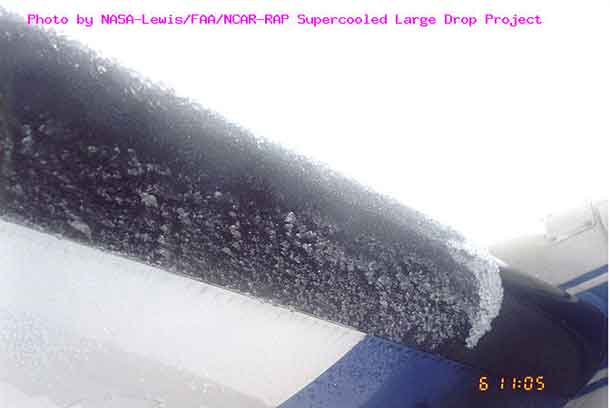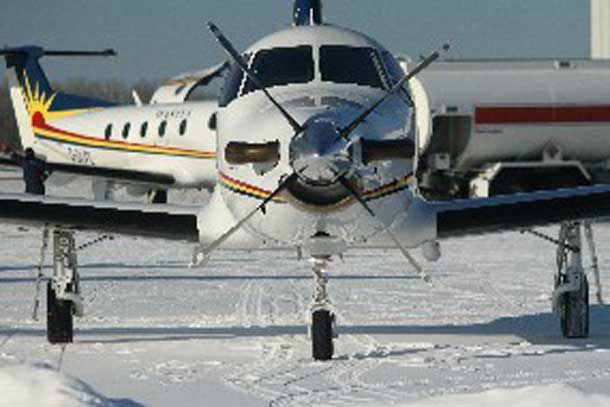
THUNDER BAY – AVIATION – Pilots and safety officials worry about ice accumulating on the wings and tail of an aircraft flying during freezing rain. Abnormal ice buildup can disturb airflow to alter the physics of flight and lead to stalls, rolls and high-velocity crashes.
Behind abnormal icing lurks a well-known culprit: supercooled large droplets (SLD). These are droplets whose maximum diameter is greater than 1000 micrometers (equal to 1 millimeter, or about half the width of the head of a strait pin.) So concerned about SLD are safety officials that on Nov. 4, 2014, the Federal Aviation Administration enacted a new rule regulating airworthiness standards in ice buildup conditions created by the presence of SLD in mixed phase and ice crystal icing conditions.
Yet, despite the known dangers of SLD, significant knowledge gaps persist — until now.
Thanks to the work of an aerospace engineering research team from Shanghai Jiao Tong University, in China and their investigation conducted in the Shanghai Icing Wind Tunnel, a fuller understanding is now emerging. Importantly, it points to a different icing mechanism at work than previously identified. The researchers explain their findings this week in the journal Physics of Fluids, from AIP Publishing.
In addition to identifying a different icing mechanism, the team developed and tested a new model of SLD and ice buildup process–known as an “impinging heating model.” It adds a novel and important step lacking in previous efforts: heat generated from the impact thermodynamics.
Led by Professor Hong Liu, Ph.D., the team worked in a closed-circuit wind tunnel, using a self-designed supercooled droplet generator that can accurately control the droplet size from 20-1500 micrometers, an aluminum plain board, and a high-speed visualization system to study the relationship at impact of water droplet size on the thermodynamics of ice buildup.
“The thermodynamic effect during the supercooled large droplet impact process has not received sufficient attention. We set out to fill certain knowledge gaps,” explained Liu. “The most critical significance of our model is that it reflects the heat transfer quantity generated from the impact thermodynamics. Nowadays, understanding the mechanism of SLD icing has become a significant goal for researchers concerned with air travel safety, so that is our goal in building and testing the most robust model to date.”
Test conditions of the Shanghai Icing Wind Tunnel reproduced the meteorological conditions that might be encountered in flight, as well as realistic variable droplet velocities and temperatures. By reproducing the impingement phenomenon in the lab, they observed rapid-freezing characteristics in droplets that had diameters of 400, 800 and 1300 micrometers.
Results of their experimental analysis provide analytical tools for determining the maximum spreading rate and the shrinkage rate of the drop, the supercooled diffusive rate and the freezing time.
Combined, this knowledge can be used to more closely characterize meteorological conditions to help pilots safely manage flights that encounter freezing rain and SLD-forming conditions.
“Our results indicate that the drop size is a critical factor influencing the super-cooled heat exchange and effective heat transfer duration between the film/substrate interface. Our detailed experimental results indeed support the safety rationale behind the rule that the FAA recently adopted,” said Liu.
Next, the team will continue to validate and refine their impinging heating model through SLD icing simulations. Fine-grained models of the shrinking rate must also be developed, as well as determining the physical mechanism of this phenomenon.
The team’s hope is that their model will help improve air travel safety, particularly in icy conditions.





